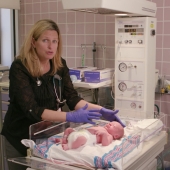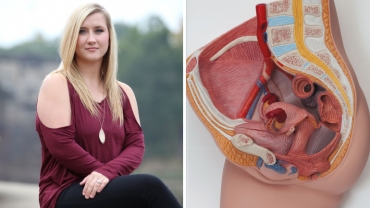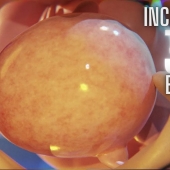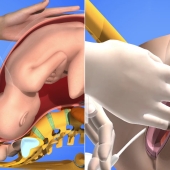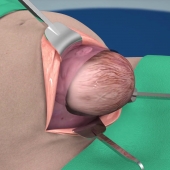During a vaginal child birth, the first stage of labor lasts for 12-19 hours and starts when the baby settles lower into the pelvis. In response, the cervix begins to efface or become thinner, and dilate or widen.
During this time, the mother may feel strong, regular contractions occurring every 5-20 minutes, a lower back pain and cramping that doesn’t go away. At the beginning of stage 2 of labor, which usually lasts from 20 minutes to 2 hours, the cervix is fully dilated to 10 centimeters, and the baby’s head has moved beyond the cervical opening and into the birth canal.
When the top of the baby's head appears or crowns, the doctor may make a small cut called the episiotomy, to enlarge the vaginal opening. The doctor will then give the mother advice and assistance in pushing the baby out.
Advantages of a Natural Childbirth
- Natural births are not invasive
- Fewer medical interventions, such as fetal monitoring
- Helps woman feel empowered and strong
- Less chance of episiotomy (incision made in the perineum)
- Reduces chances of harmful side effects to baby
- Less chance doctors will need to assist birth with tools such as forceps or vacuum extraction
- Mother is aware and alert during entire process
- No need for IV’s or monitors
- Uninterrupted secretion of hormones is ensured
- Partners are able to be a part of the process more efficiently, working with mother as a team through the entire event
Disadvantages of a Natural Childbirth
- There’s no way to know if labor will be delayed or prolonged. Many variables come into play, including the mother’s emotional state, if she feels safe in her birth location, if she feels comfortable with her birth team, etc.
- Mother needs to be willing and encouraged to learn to work with labor contractions. This can be accomplished by attending a credible childbirth preparation class.
- Prodromal labor (labor before 4 cm dilation and/or progressing regularly in dilation) may last for a couple days but these contractions are generally mild and manageable.
If complications arise, mother may need medical interventions.
- 4827 views



